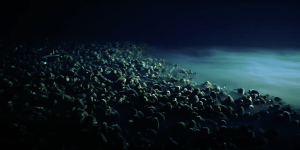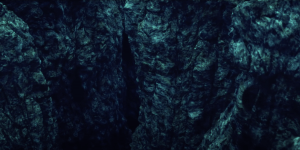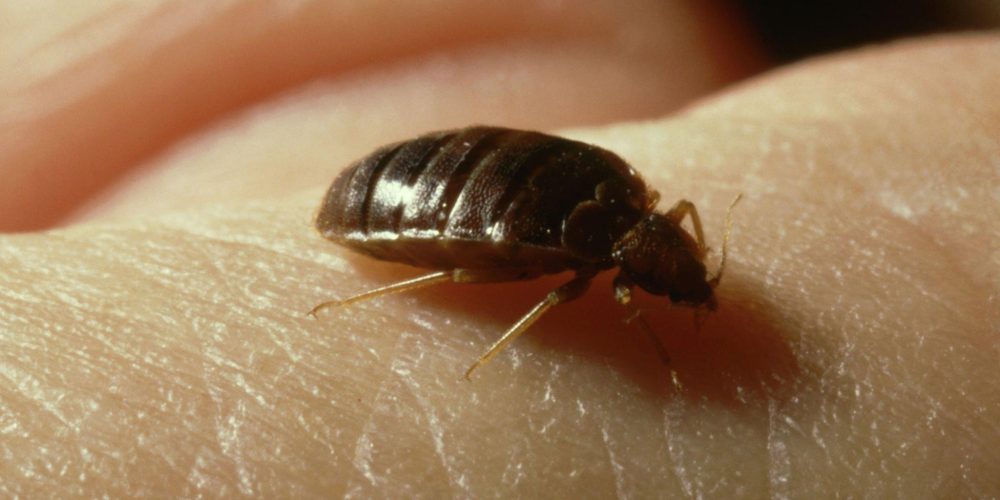While hundreds of adventure-seekers climb Mount Everest every year, only 27 people (as of September 2022) have ever descended to the very bottom of the Mariana Trench. Click here to stay updated. Home to some of the harshest conditions and most extraordinary creatures in the world, the mysterious Mariana Trench is currently the deepest known point in all the oceans of our planet. This oceanic mystery is located in the western Pacific Ocean. We have very little knowledge about this place, and it has kept researchers diving for answers for centuries.
Facts and location
The Mariana Trench is the “Grand Canyon” of the ocean, and it stretches for more than 1,580 miles (2540 km) with a mean width of 43 miles (70 km). It is a crescent-shaped scar in the Earth’s crust and deeper than the mind can ever fathom. The environment is quite inhospitable. Due to its extreme depths, it is a place of perpetual darkness and bitterly cold temperatures. At the very bottom, the pressure is 8 tons per square inch, about 1,000 times the pressure at sea level! That is the equivalent of stacking 50 jumbo jets on top of a person.
We know more about the surfaces of the Moon and Mars than we do about the Mariana Trench. Measuring anything at the greatest depths of this trench is exceedingly difficult because of the technical challenges. This involves delivering and utilizing necessary instruments that are not built to be used in such a location. It poses a tremendous logistical and engineering challenge for research because the majority of marine equipment cannot function below 20,000 feet (6 km). Therefore the majority of the trench is still unmapped.
The vastness of our oceans is genuinely remarkable. Seventy-nine percent of the entire volume of our planet’s biosphere is made up of waters with depths greater than 3,000 feet (900 meters)! That means we have only scratched the surface when it comes to researching life in this realm.
The distance between the water’s surface and the deepest part of the trench, called Challenger Deep, is about 7 miles (about 11 km)! By comparison, if Mount Everest itself were to be dropped into this part of Mariana Trench, its peak would still be more than a mile underwater! That sounds unbelievable; imagine getting lost here.
Formation of the Mariana Trench
Ocean trenches make up the world’s “hadal zone”, which is named for Hades, the Greek god of the underworld. They account for the deepest half of the global ocean. They are a deep-sea wonder that usually forms when two tectonic plates (plate boundary) collide and the older plate slides underneath the newer plate, a geophysical process known as subduction. The subduction zone of the Mariana Trench was created when the Pacific plate was subducted beneath the Mariana plate.
Subduction is responsible for a lot of the Earth’s seismic activity, often resulting in large and impressive earthquakes, including some of the most significant quakes on record! Major seafloor earthquakes in subduction zones were responsible for the 2004 Indian Ocean tsunami and the 2011 Tohoku earthquake and tsunami in Japan. After seeing how much damage two moving plates can do, it is imperative that we learn all we can about the deep ocean floor.
Environment
The Mariana Trench is a unique habitat that houses a diverse number of species, many of which are newly discovered or still unknown to science. As you’d imagine, in this cold and dark world, there are animals found nowhere else on the planet, with specialized adaptations and features that seem straight out of a science fiction movie.
With incredibly high pressure, frigid temperatures, and lack of light for photosynthesis, one may wonder what these creatures eat to survive and how they can reproduce.
One feature that helps survival is marine snow. This is the organic material, often from dead and decaying plants and animals, originating from the ocean’s surface that slowly drifts to the bottom of the sea. Sometimes it can take weeks for flakes to fall to the ocean floor. Some creatures filter this from the water while others scavenge it from the very bottom. It is a very reliable source of food that provides much-needed energy for these animals. Other animals are predators and prey on smaller ones as an opportunity for survival. It really is about the survival of the fittest down in the deepest depths.
Animals that live in the Mariana Trench
Because of the high pressure and geographical isolation, there is an extraordinarily high abundance of highly specialized organisms which thrive in this world. One perfect example is the anglerfish. This intelligent and toothy fish dangles a fin with a glowing tip over its mouth to attract prey to swim right up to its mouth.
Another creature that lurks in these dark depths is the goblin shark. This deep-sea dweller is also called a ‘living fossil” as it is related to a species that has been around for 125 million years. It has an elongated snout that is equipped with special sensing organs. This feature helps the goblin shark to locate prey in the dark environment, and it uses its alien-like jaws to ambush squid, fish, and crustaceans. But not all creatures down here look or sound this intimidating.
The Mariana Trench is also home to the ever-charismatic dumbo octopus, one of the cuter critters of the deep. Short and stout, it roams the ocean flapping its ear-like fins on either side of its head, much like the Disney character. Unlike many other species of the octopus family, the dumbo octopus does not have or need an ink sac because its encounters with predators at that depth are so rare.
Exploration of the Mariana Trench
We have explored the Mariana Trench for over a century. The first voyage in the area was in 1875 by the British navy warship HMS Challenger. This expedition resulted in the first “outline” of the shape of the trench. Using a weighted-sounding rope, the explorers were able to record a depth of 5 miles (8 km) and get a rough idea of what the canyon entailed.
In 1960, Jacques Piccard and US Navy LT. Don Walsh descended into Challenger Deep. It took 5 hours for them to descend via the Trieste, a naval bathyscaphe. Unfortunately, they were only able to spend 20 minutes at depth and saw very little due to the sand/mud clouding the water on the bottom, but these pioneers paved the way for future researchers.
Canadian filmmaker James Cameron has also ventured into Challenger Deep in his co-designed “vertical torpedo”—a high-tech submarine vehicle. In 2012 he explored the Mariana Trench solo, descending in 2 hours and 36 minutes in the coffin-like vessel. James was able to spend hours exploring the seafloor and cliffs, gathering highly coveted video footage and samples.
In April/May 2019, American explorer Victor Vescovo set the world record for the deepest manned dive into the Mariana Trench, venturing down to 35,850 feet (11 km). On his adventure, he discovered 4 new species but also sadly found plastic debris on the ocean floor. Just a few weeks later, three more people dived down to the bottom of the Mariana Trench; two anonymous adventurers that were led by an experienced captain. Since then, many more people descended to the bottom of the Mariana Trench.
The majority of this trench is protected as part of a US National Monument. Its protection was established by presidential proclamation in 2009 and provides international, national, and local recognition as a wildlife refuge for seabirds, sea turtles, rare coral reefs, and many seamount and hydrothermal vent species.
Future
Perhaps one of the most exciting aspects of trench research that has direct benefits for human beings is the newly discovered microbes that inhabit these deep-sea hydrothermal vents. They may help us as reliable sources of antibiotics and anti-cancer drugs! These vent species may also be able to help us understand how ocean life has originated and evolved over time from the hadal zones to all of the other zones throughout the oceans of the world.
There is so much we have left to learn about this very special ecosystem. The ever-developing field of deep-sea technology is creating more capable equipment such as cameras and samplers, which will give researchers a better chance to perform systematical research for longer periods of time. With this opportunity comes advanced knowledge of biomedical research, earthquakes, geophysical processes, the role our deep-sea plays in global warming, the evolution of life on Earth, and so much more!
The Mariana Trench is a frontier for exploration on our planet, promising many fascinating secrets for us to uncover. Who knows what other phenomenal mysteries await our discovery at the deepest part of our oceans? Therefore, it is important that we do all we can to support the protection of this environment, so we can preserve all of the fascinating gifts that it has to offer.


















